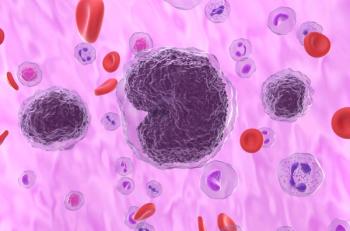
Researchers Identify Significant Prevalence of HIV-Transmitted Drug Resistance
Among 206 people visiting a county HIV clinic between 2006 and 2013, there was an overall 17.5% prevalence of transmitted drug resistance.
Researchers investigating the prevalence of HIV transmitted drug resistance (TDR) have found a high prevalence of TDR among newly diagnosed, treatment-naïve individuals seeking care at a county HIV clinic in Santa Clara County, California.
Notably, the study included integrase strand transfer inhibitors (INSTIs) in the classes of drugs for which TDR was assessed. To date, there have been few studies researching TDR to INSTIs among people living with HIV, and the available data have indicated that there is a low prevalence or an absence of this occurrence.
Identifying the prevalence of INSTI TDR has important implications, as “INSTI resistance mutations are not routinely included in standard baseline resistance testing, but they are expected to increase in the future as INSTIs are currently a recommended antiretroviral therapy (ART) by the US Department of Health and Human Services,” wrote the researchers.
Among 206 people visiting the clinic between 2006 and 2013, there was an overall 17.5% prevalence of TDR. Among 4 commonly used antiretroviral drug classes, the prevalence of TDR to nonnucleoside reverse transcriptase inhibitors was 7.3%, followed by 6.8% for nucleoside reverse transcriptase inhibitors, 2.9% for INSTIs, and 2.4% for protease inhibitors.
There was a nearly 2% prevalence of dual-class resistance among those with TDR, and there were no patients with triple- or quadruple-class resistance.
For those with INSTI resistance, the only mutation associated with resistance was E138A.
“Although there is no indication of a significant, underlying trend, it should be noted that instances of E138A doubled in 2010-2013 compared to 2007-2009, which could be a result of increasing INSTI usage,” wrote the researchers. “Given our finding of a mutation associated with INSTI resistance, testing for INSTI resistance during routine genotyping should be considered.”
With HIV TDR occurring from the transmission of drug-resistant infection from one individual to another, the researchers added that the findings can help improve ART outcomes and prevent future transmission events.
They did note that their study sample is not a comprehensive representation of the general population, so the results may not fully reflect the county’s TDR patterns.
Reference
Chan W, Ly W. Surveillance of transmitted HIV drug resistance among newly diagnosed, treatment-naive individuals at a county HIV clinic in Santa Clara County. Heliyon. 2019;5(9):e02411. doi: 10.1016/j.heliyon.2019.e02411.
Newsletter
Stay ahead of policy, cost, and value—subscribe to AJMC for expert insights at the intersection of clinical care and health economics.













































